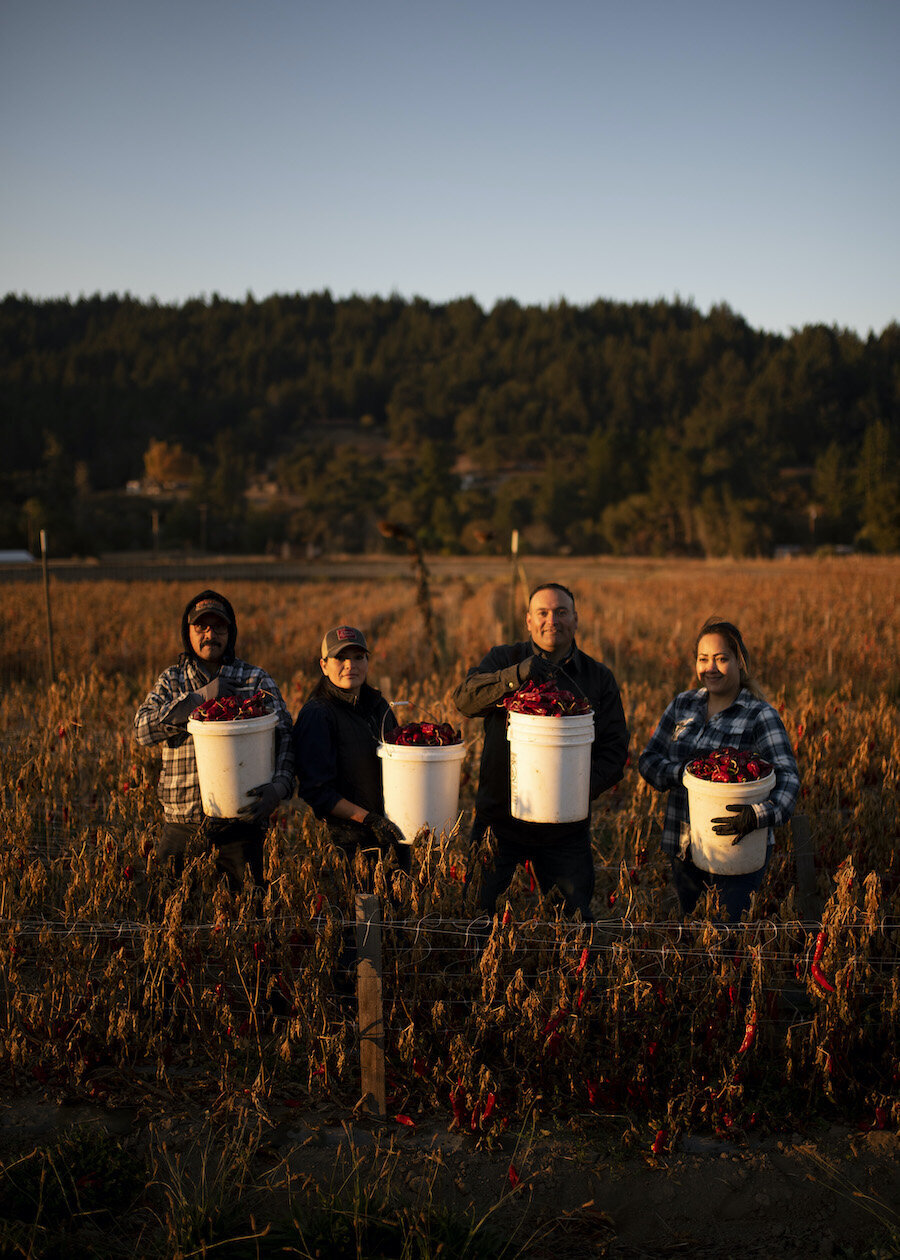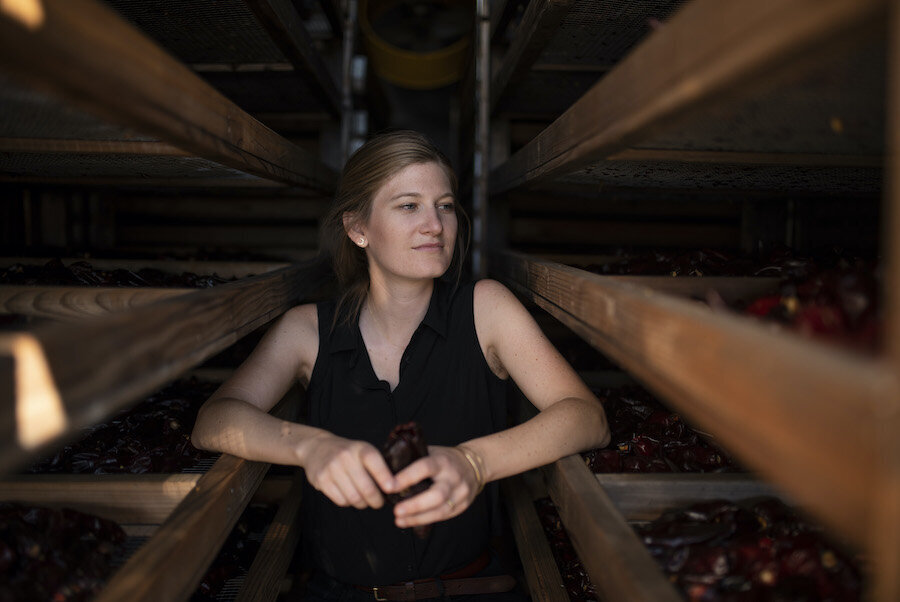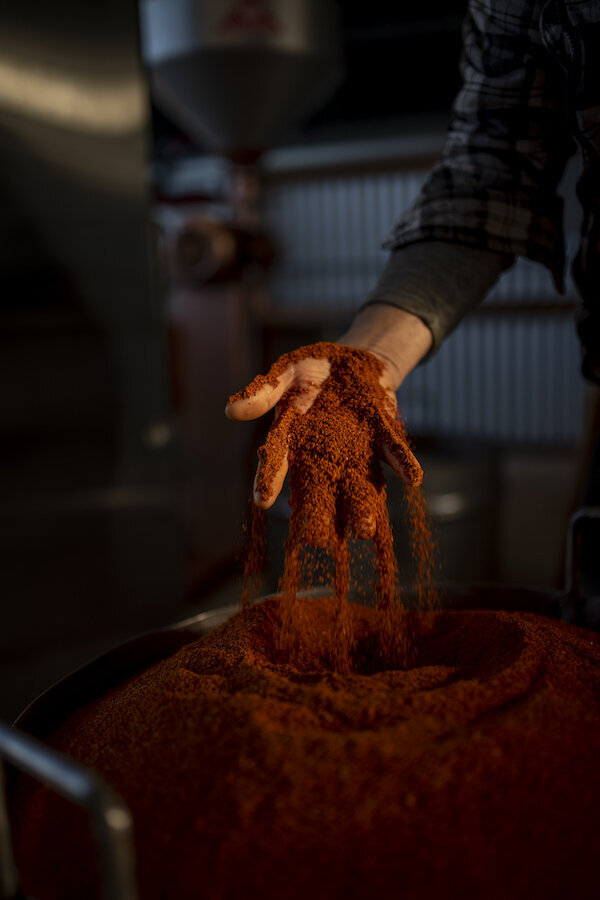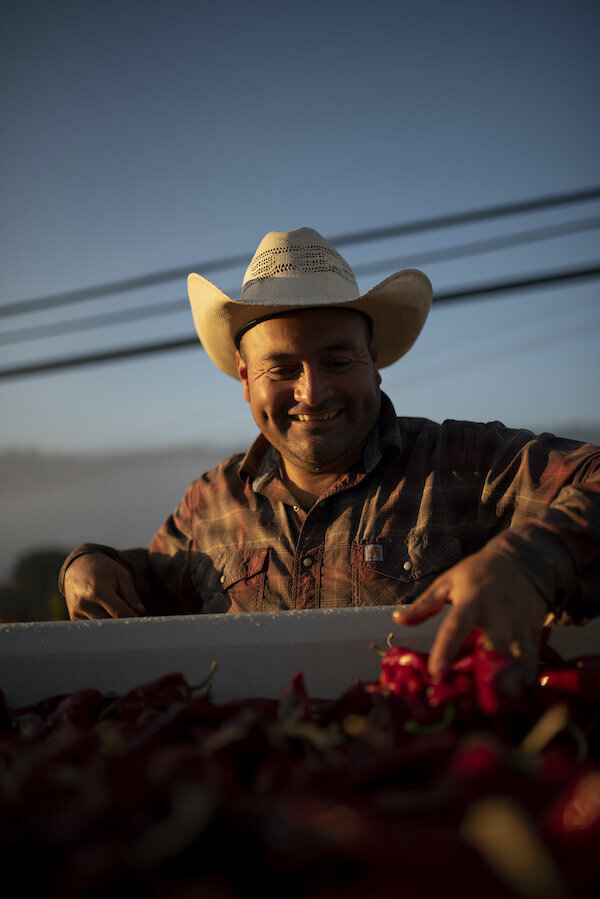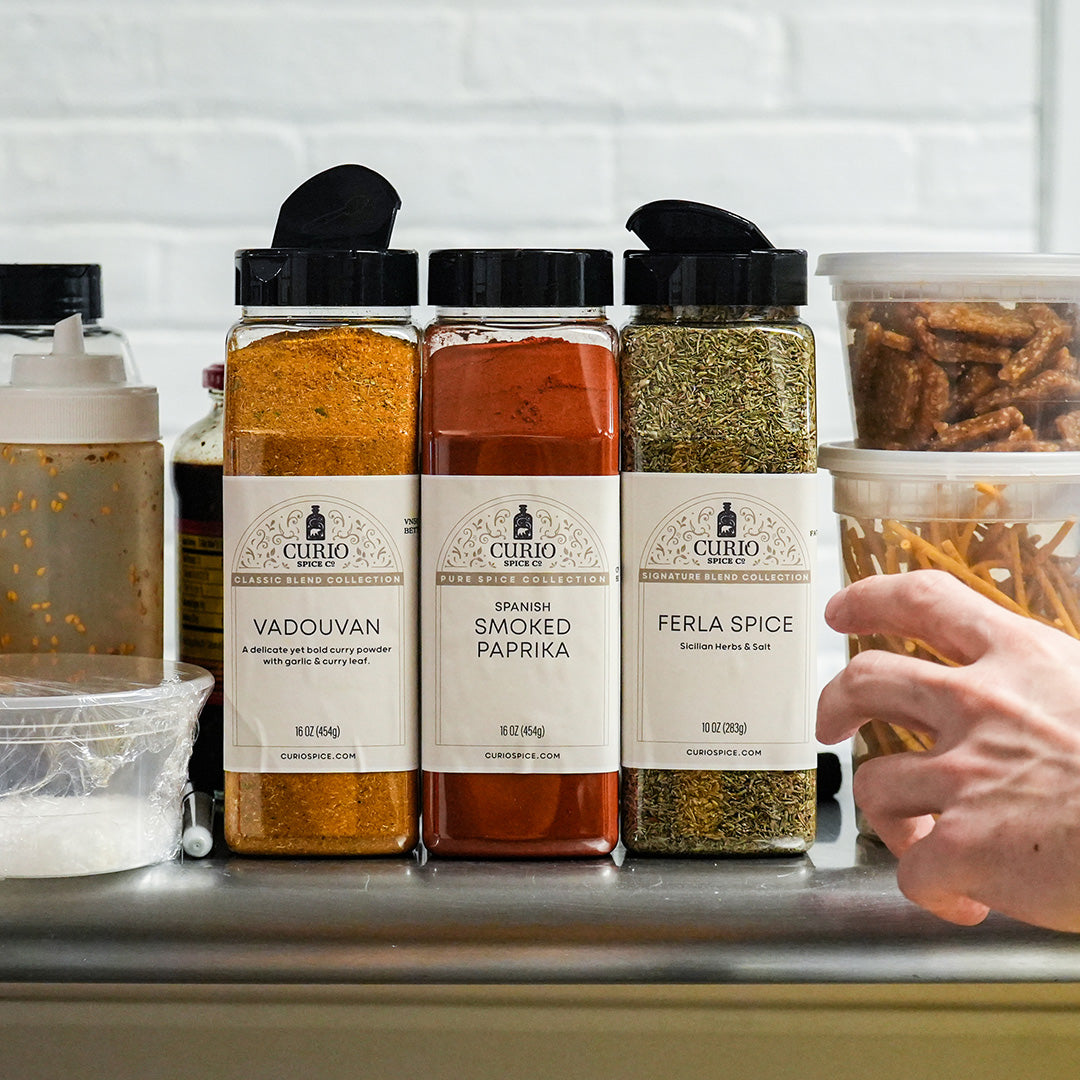Boonville Barn Collective, a seven-acre property straddling a two-lane highway, is now a fully functioning chile farm that grew 60,000 chile plants last year alone, making it one of the largest producers of espelette chilies outside of France. Theirs is a tight knit operation that gets by with a full time staff of four. Scommegna and her fiancé Gideon Burdick manage the sales, marketing and business administration; Nacho Flores as foreman, and his right hand man, Martin Flores (no relation), tends the farm.
Three acres of the land are devoted exclusively to growing espelette, though because piment d’espelette—similar to Champagne—can only be sold under that name if it’s actually grown in the town of Espelette, France, Scommegna markets her product under the cheeky moniker: Piment D’Ville. The pepper of Boonville.
In all directions surrounding the farm are vineyards - making Boonville Barn Collective one of the few growers in the region stewarding something other than grapes, and bringing some diversity back into the landscape (which used to be a historic apple growing region).
Understanding how the heat in a chile develops over time, both on and off the plant, helps the Boonville Collective team capture them at different flavor profiles. “Peppers are a really jealous plant,” says Flores, only half joking, “They’re really delicate to cold. They love calcium. You have to learn how to read the plants without having a lab test.”
Typically, the spiciest chilies—the ones we at Curio Spice love most—are the first to come off the plant. These are prepared (stems and seeds removed) and placed directly in the dehydrator for 24 hours, before being ground and packed. To achieve a sweeter flavor, however, chilies are left to sit in the greenhouse drying rack for about 10 days before being placed in the dehydrator. This way, they will have time to cure and the sugars evolve.
In September 2019, Scommegna and her fiancé Gideon decided to make running Boonville Barn Collective a full-time job, with a mission of expanding the business. More recently, they have added other chilies, which they sell dried and crushed, like comapeño and poblano. They also have 3,000 strawberry plants, 500 olive trees, and produce five different kinds of heirloom Italian white beans. But Scommegna says her chief goal is to bring the espelette pepper into the pantry of chefs and home cooks across America.
”This might be a Basque chile from France, but we’re trying to make it more of an everyday staple,” says Scommegna. “Once you start using Piment D’Ville, you start understanding its total versatility and flavor. It’s not just for that black pepper flavor. It’s not just a chile flavor. It adds a nice depth and complexity to food when you cook with it. But it can also be used as that finishing spice to amp up the flavor in a different way.”
